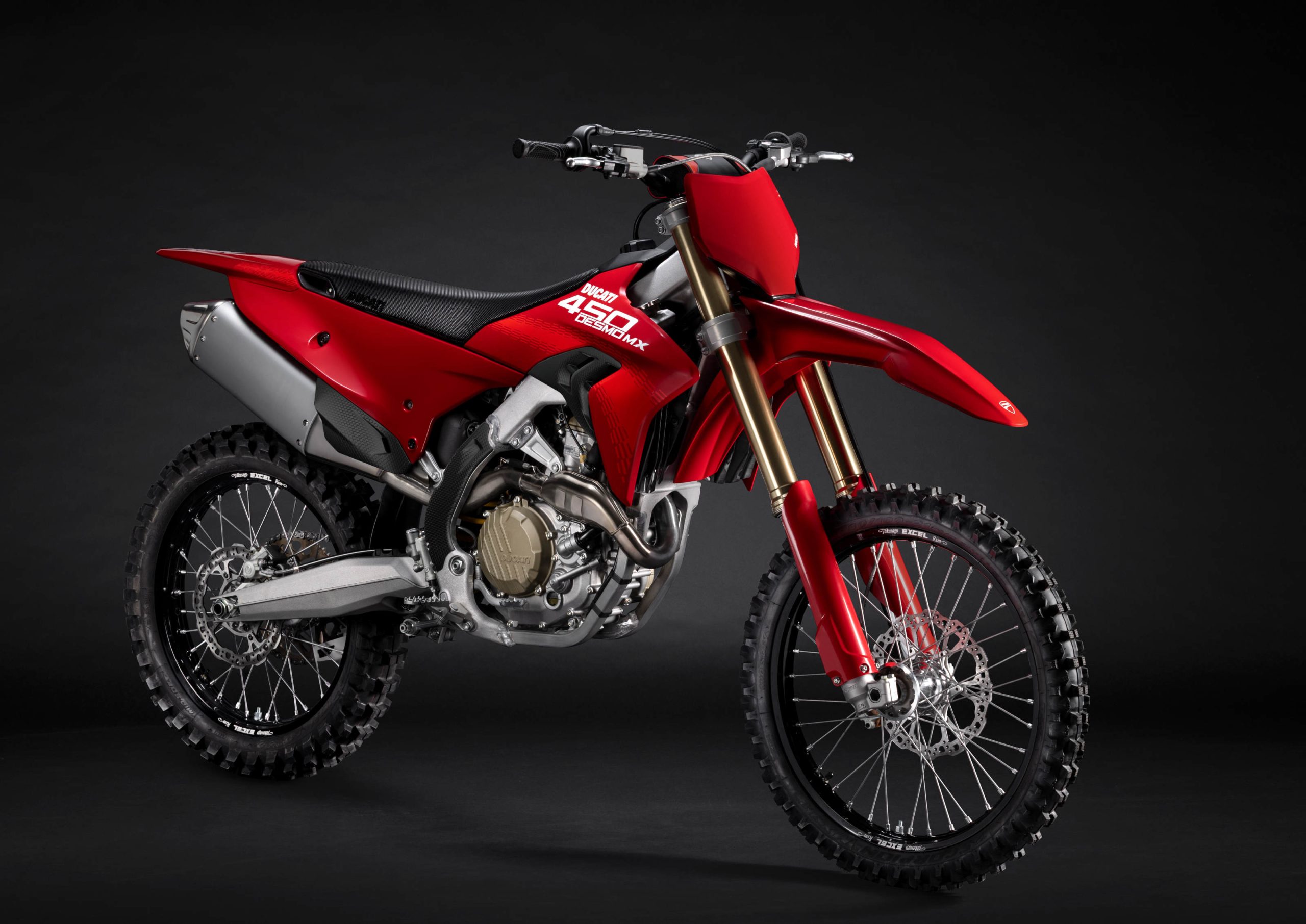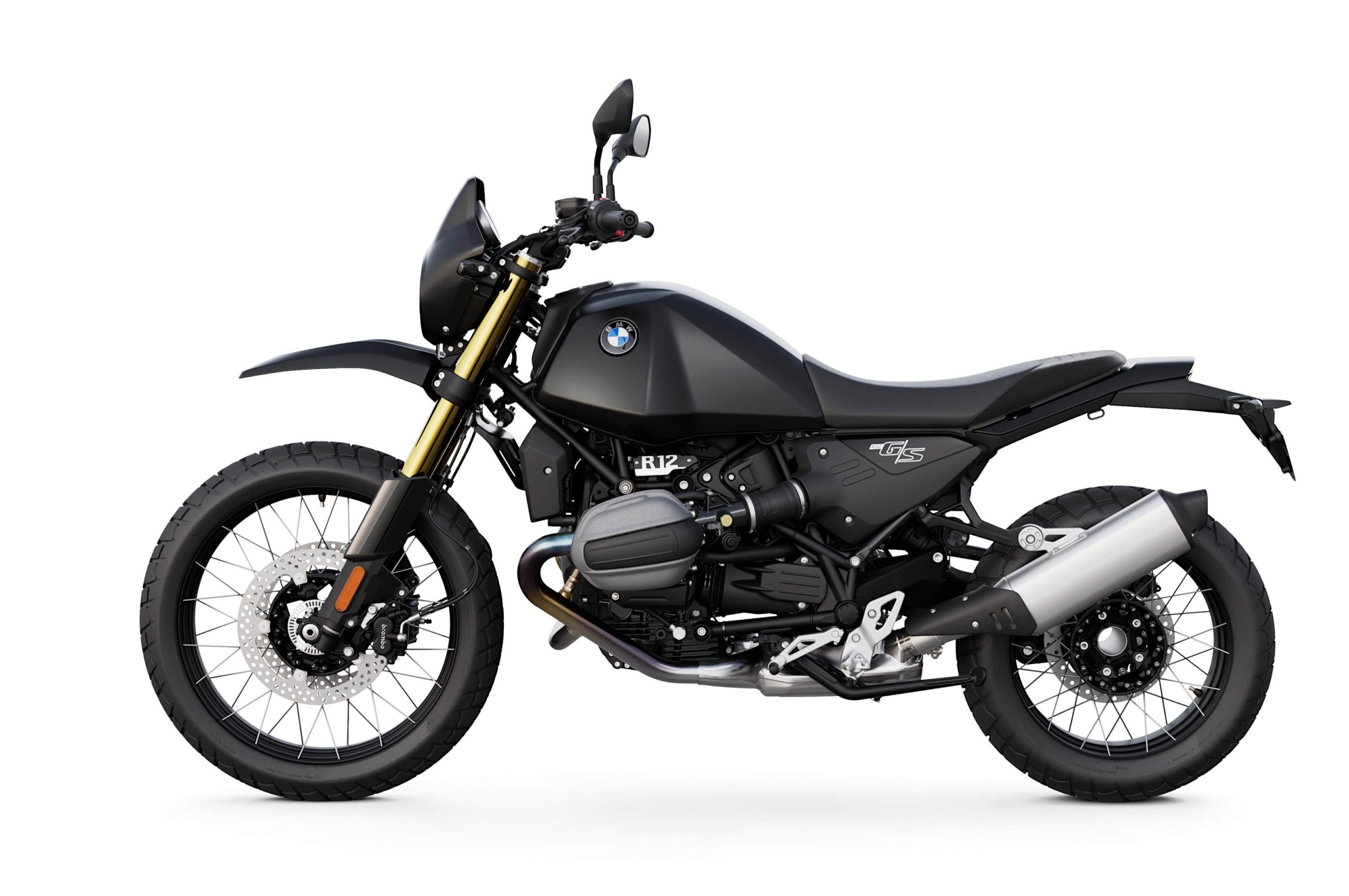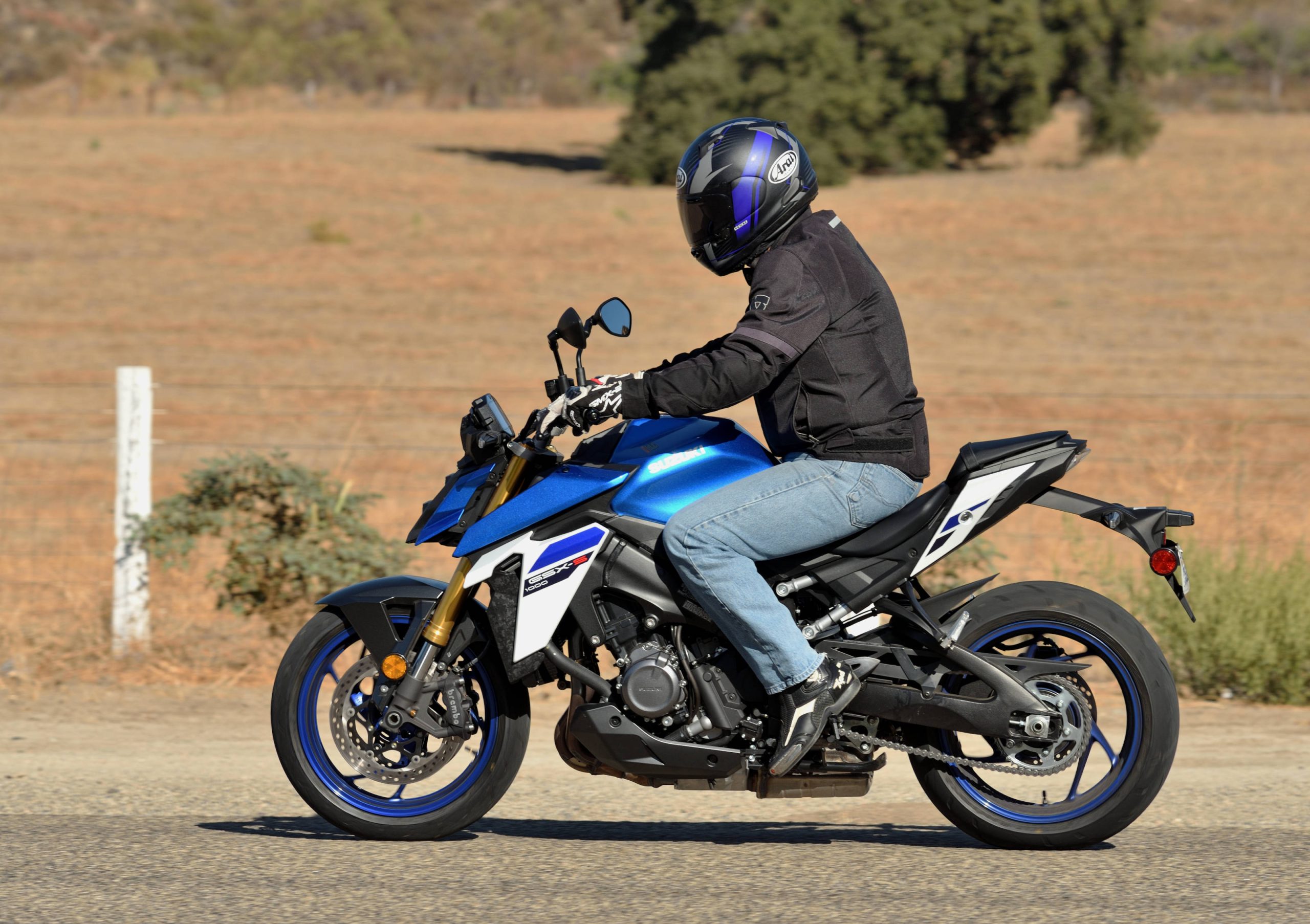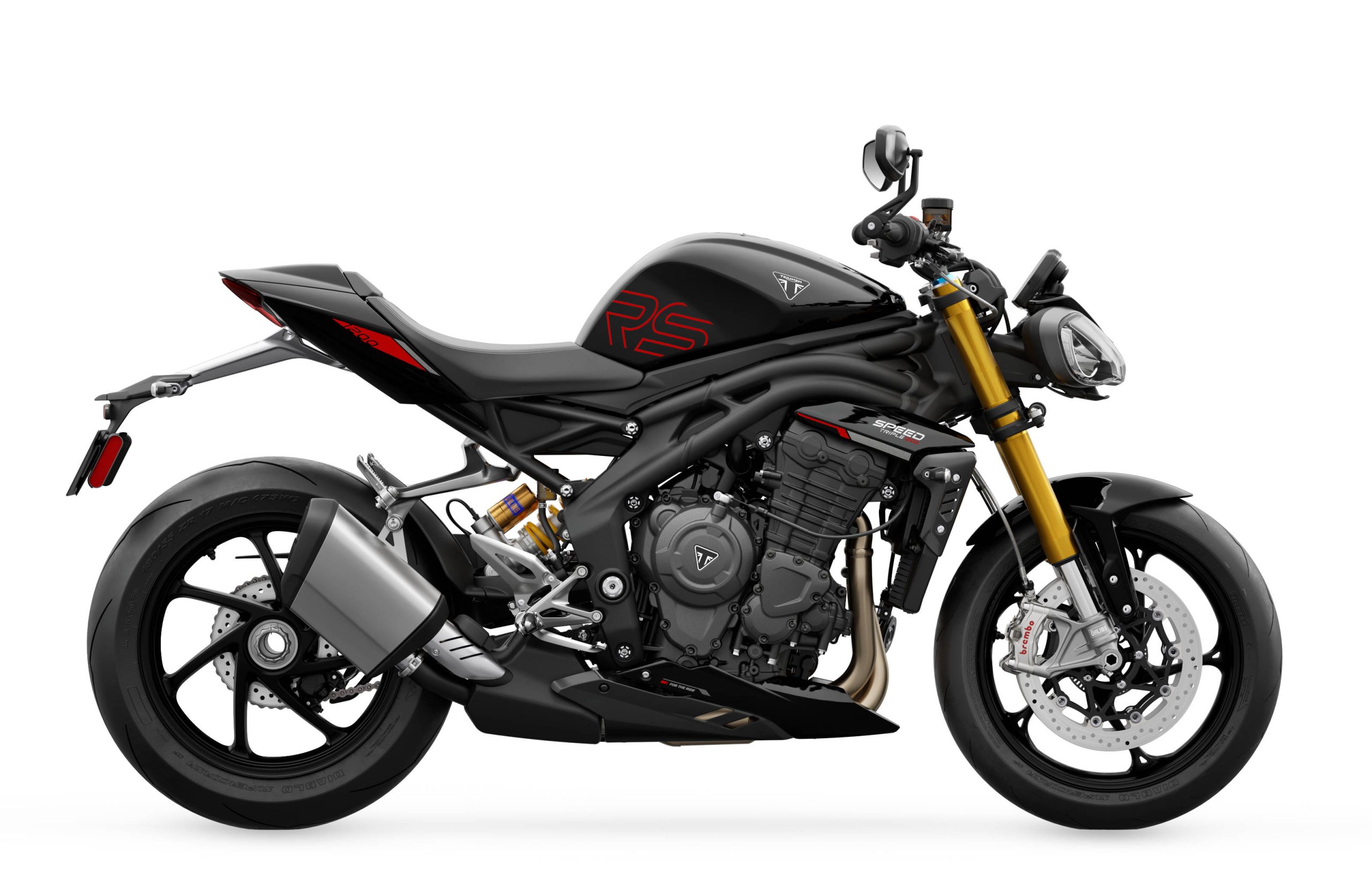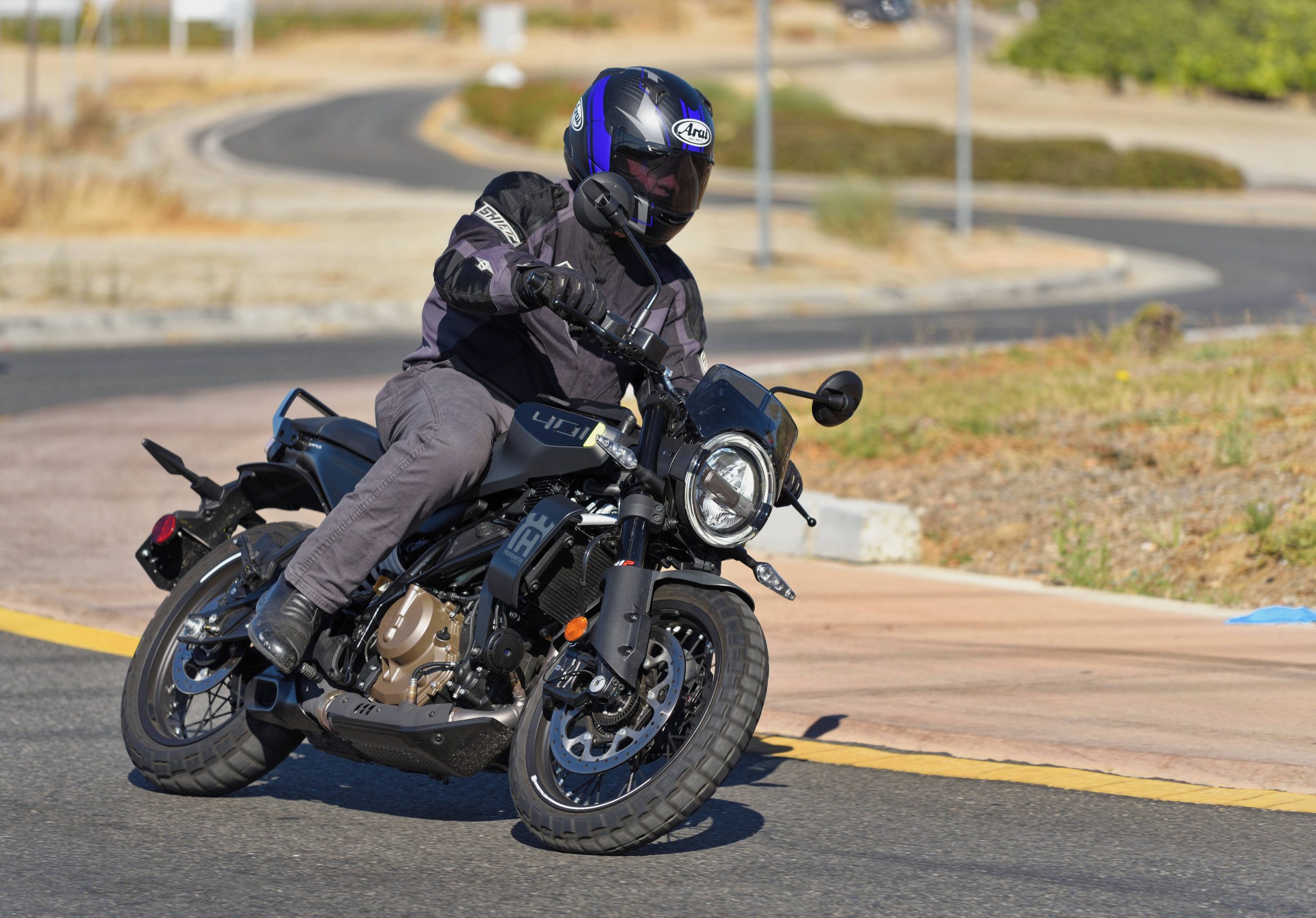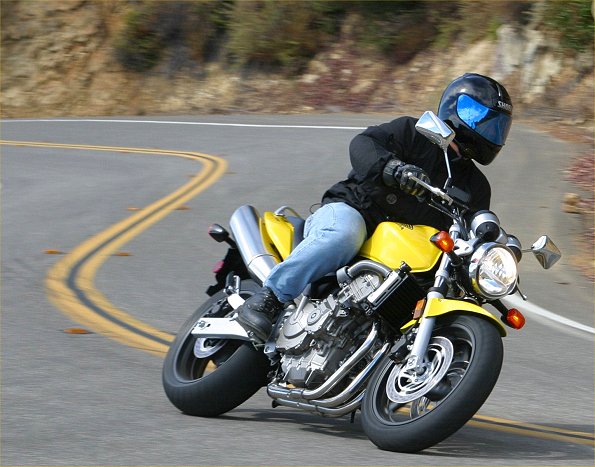
I have a question for you. What is the single, largest selling motorcycle in Europe? The answer . . . The Honda Hornet 600. In other words, the motorcycle known as the Honda 599 in the United States for 2004, which is the subject of this ride impression.
If the Honda 599 has been the largest selling bike in all of Europe the last two full calendar years (2001 and 2002), why hasn’t Honda brought this bike to the U.S. before? That’s easy . . . Americans don’t buy naked bikes, remember? At least, that has been the mentality of most of the major motorcycle manufacturers until very recently.
Although standard-style motorcycles (since, more popularly known as nakeds) have been around in the United States for years, we were stuck with outdated models, largely unchanged for a decade, or two.
Manufacturers tested the waters with modern, open-class nakeds offered for sale here in the U.S. for the first time just a few years ago (after notorious sales failures, such as the Honda CB1000 and the Kawasaki Zephyr series). Beginning with the Suzuki Bandit 1200, and, eventually, the Yamaha FZ1, Kawasaki ZRX1200, and the Honda 919, it is now commonly accepted that you can sell open class nakeds here in the U.S. (although the sales volumes are not huge for any manufacturer, as we understand it).
In Europe, things are different. Travel distances are generally shorter, and congested in-town-type commuting is more frequent than high speed freeway travel (more common here in the U.S.). Naked bikes, with their upright seating positions and greater handlebar leverage are huge sellers. Especially, the middleweights, such as the Honda Hornet 600 and the Yamaha Fazer 600 (just replaced by the FZ6).
So, now, both Honda and Yamaha have decided to bring their big-selling naked 600s into the U.S. market for 2004. Yamaha, arguably, took the more conservative route by bringing over only the faired version of the new FZ6, while Honda introduces the 599 — full birthday suit.
Like many U.S. hard-core enthusiasts, I have read about the Honda Hornet 600 in the European press frequently since its introduction in the late 1990s. A hit on the Continent from the beginning, the European press generally gushed, and paid plenty of attention to naked middleweights in general. Indeed, middleweight nakeds became the largest, fastest-growing segment in the European market (with the Hornet 600 leading the way in terms of volume). This was helped in no small part by the single-brand racing series known as the Hornet Cup. Sounds like good fun, but Yanks were left out.
No more. The 599 is here, and available at U.S. Honda dealers this November at a U.S. MSRP of $7,099. We just got back from a ride on the 599 through the Malibu area of Southern California — a combination of freeways, surface streets and twisty canyon roads.
We will save most of the technical background of this bike for our full review, a bit later on. For now, understand that the 599 features the 599cc engine from the Honda CBR600F3 — Honda’s supersport machine until replaced by the F4 in 1999. The power plant has been retuned from supersport status with smaller carburetors, longer intake tract and longer head pipes for more low-to-midrange oomph. The chassis, similar to the Honda 919 introduced in the U.S. a couple of years ago, is a steel mono-backbone design.
The first-generation Hornet 600 was a hit, but the Hornet was significantly redesigned when the second-generation bike was introduced to Europe for the 2003 model year. Fortunately, it is the redesigned machine that we are receiving here in the U.S. as the 599. Like any intelligently designed second-generation model, it incorporates responses to customer feedback (lots of customers, remember?), including a larger gas tank (for greater range), firmer suspension rates and a more aggressive style.
Plenty of other changes went into the 2003 Hornet 600, and make their way over to the 599, including a unique new headlight with two bulbs, a lightweight polycarbonate lens, and computer-designed aluminum multi-reflector. Per Honda, this all adds up to a significant improvement in lighting. Smaller touches include the new, electronic instrumentation and rubber mounting of the fuel tank and saddle — to minimize noise and vibration.
As we said, we’ll save the more mundane details for our full ride review. Let’s get right to our first riding impression (consisting of 130 miles through the aforesaid Southern California jungle).
After testing so many fuel injected motorcycles lately, it is a bit surprising when a machine is cold-blooded. The carburetor-equipped 599 takes a few minutes to clear its throat and respond cleanly from idle. Nothing major, and perhaps less noticeable than on many other carbureted bikes, but still a departure from the modern, fuel-injected experience.
Once warmed up, the 599 engine responds extremely well to your commands. Like any four-cylinder 600, the 599 doesn’t have gobs of torque off the bottom, but Honda made the right changes to enhance the low-end and mid-range of the bike.
Power is delivered in a linear, glitch-free manner, and is adequate everywhere, but rapid forward motion occurs above 6,000 rpm. From there all the way to redline at 13,000 rpm, the 599 pulls well (and with authority above 9,000 rpm).
All the while, the engine emits just the slightest amount of vibration. It is nowhere near a level constituting annoyance.
The ergonomics of the bike are very upright (like most nakeds), but may prove a bit tight for taller riders — especially the distance between the seat and footpegs. At 5’10”, I had no problems, but did notice a footpeg placement that seemed somewhat aggressive for a naked.
The reach to the bars is short, and the angle of the hands on the bars seems natural and comfortable.
The seat seemed somewhat Honda hard, but reasonably comfortable, nevertheless.
Most importantly, riding the 599 is a joy. The bike feels light (a claimed 401 pounds dry — lightest in the class) and balanced. Although the suspension is largely non-adjustable (save for preload on the rear shock), the settings arrived at by Honda are again a good compromise between sporty and comfortable. With my rather generous girth, I bumped up the 7-stage preload adjuster on the shock from the standard position 2 to position 5.
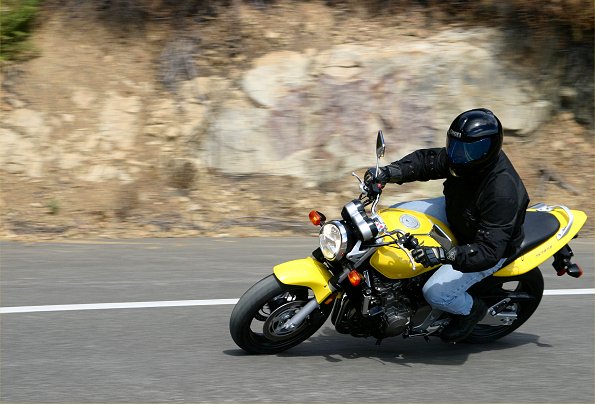
The clutch and transmission were unremarkable, which is to say they were good. Unnoticed, really.
What was noticed was the smooth and generous power, strong and predictable brakes, and versatile handling.
Comfortable and steady at high speeds in a straight line, the 599 loves corners too. The Michelin tires featured on our test model were grippy and offered good feedback through the steel chassis.
All-in-all, the 599 offered us a good taste of what we’ve been missing here in the States. Can’t wait to get our hands on a longer-term test unit.

